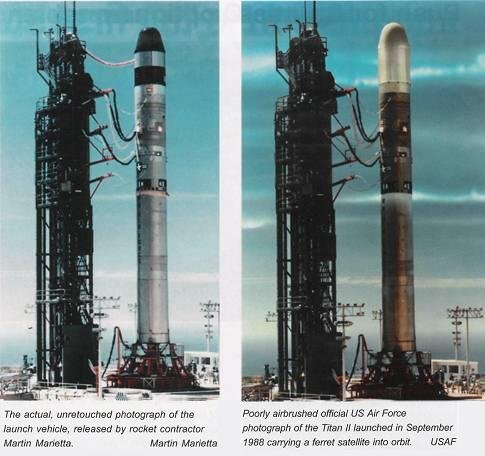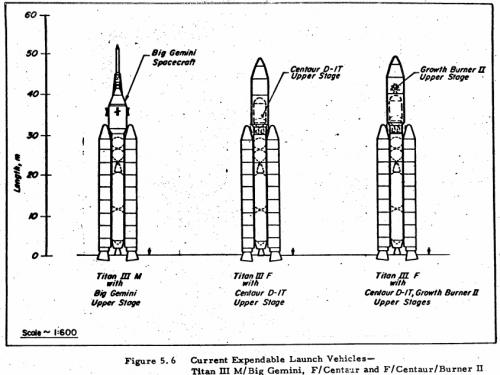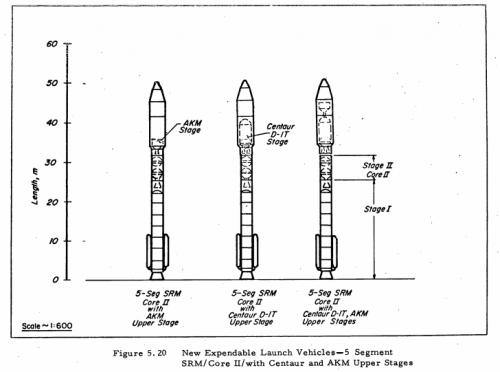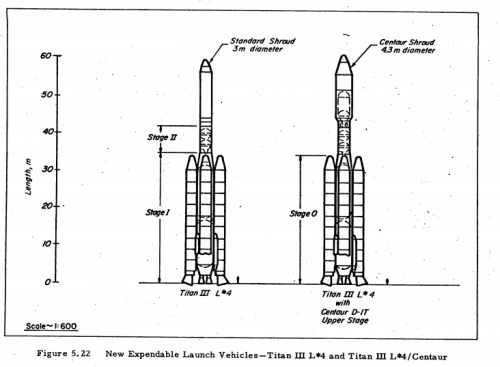Some very interesting Titan derivatives in (1), as well as methods of varying sanity to launch Shuttles. A few of the Titan-y highlights for your delectation include the Titan IIIM and Titan IIIF (same animal, actually, just not man-rated), as well as some interesting notions for future derivatives of the Titan family in place of the Space Shuttle.
The proposed medium launcher uses a 5-segment 120" Titan SRM with a Titan III second stage as an upper stage. Agena or Centaur upper stages could also be added for high-energy missions. They note that the performance could be varied by altering the lenght of SRM used, and that the thrust vector control system of the SRM would need development.
There's also some fairly good information on the uprated Titan III with the 15-foot diameter, four-LR87 core. Apparently, it would've been capable of taking two, four or six seven-segment 120" SRMs, although only the four-segment version was found useful in the study. The first stage would have 476 tonnes of fuel (as opposed to Astronautix' 300 tonnes) and the second stage, of only 10 foot diameter, 87.43 tonnes. It's also suggested that the IIIL could use a hammerhead fairing of up to 10 metres diameter.
Annoyingly, the reference for these vehicles - Volume IV of the report in (2) - is not on NTRS, although Volumes I to III and V are online; Volume VI is classified. One would imagine that the missing volume would go into more detail about the SRM launcher and Titan IIIL at least. However, the linked Volume I does have a summary table, which gives payload capacities to a 100 nautical mile, 28.5 degree orbit from KSC as:
7,900 lbs for the 5-segment SRM/Titan III second stage launcher
38,000 lbs for the Titan IIIF and Titan IIIM
62,500 lbs for the Titan IIIL-2
91,000 lbs for the Titan IIIL-4
(1) Mathematica Economic Analysis of the Space Shuttle System
http://ntrs.nasa.gov/archive/nasa/casi.ntrs.nasa.gov/19730005251_1973005251.pdf
(2) Integrated Operations/Payloads/Fleet Analysis Final Report - Volume I: Summary, Study Overview
http://ntrs.nasa.gov/search.jsp?R=19720019140&hterms=19720019140&qs=Ntx%3Dmode%2520matchany%26Ntk%3DAll%26Ns%3DLoaded-Date|1%26N%3D0%26Ntt%3D19720019140






